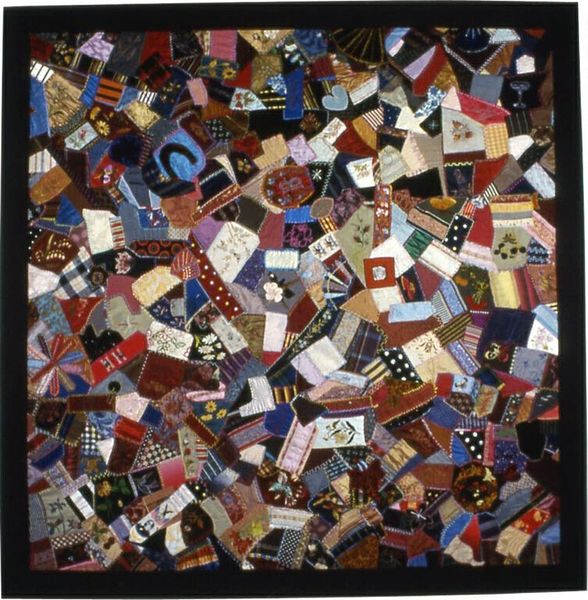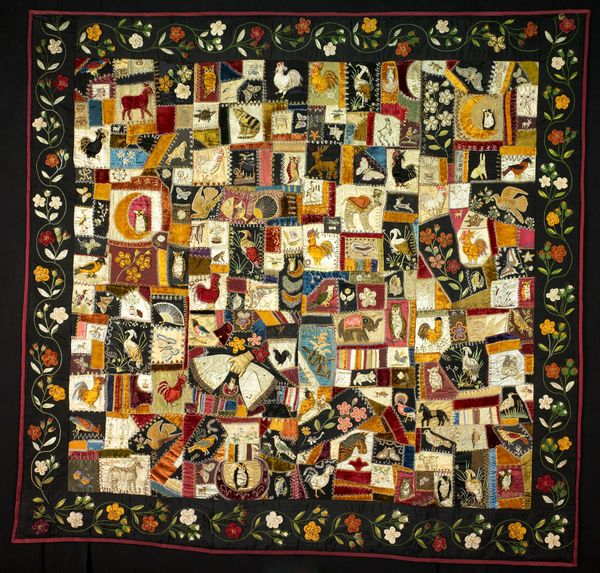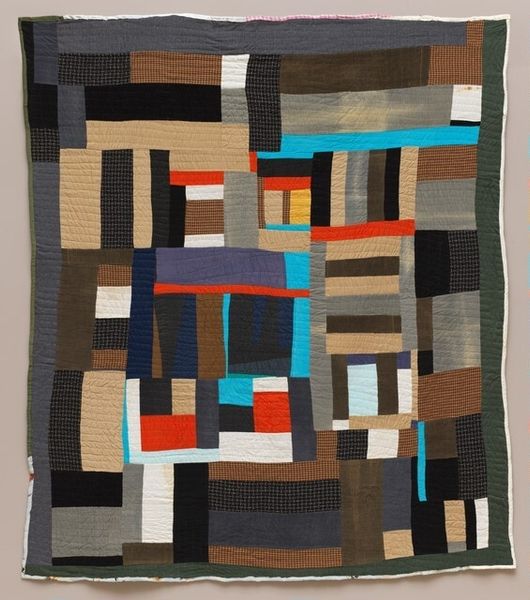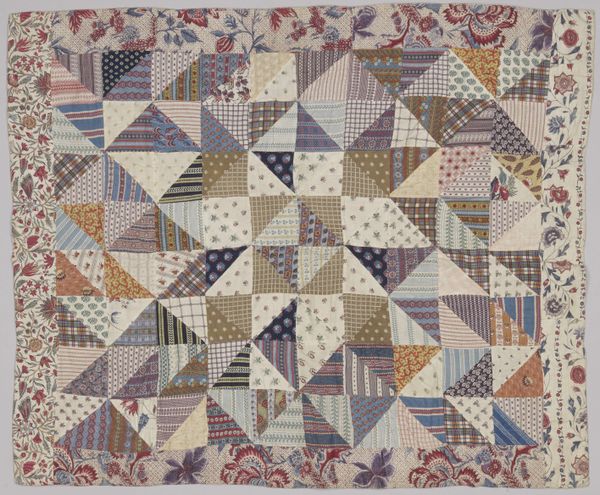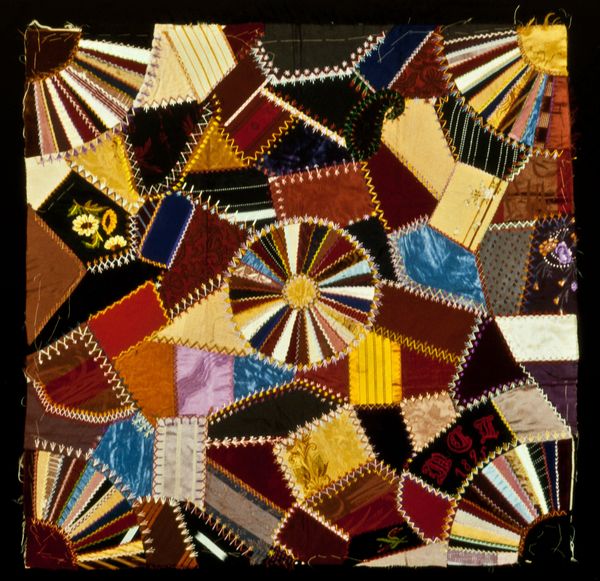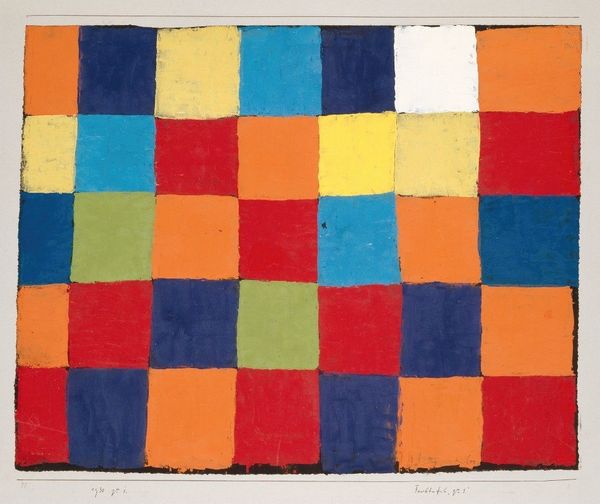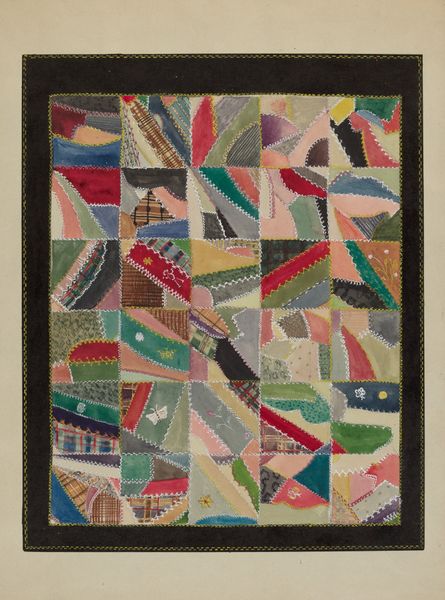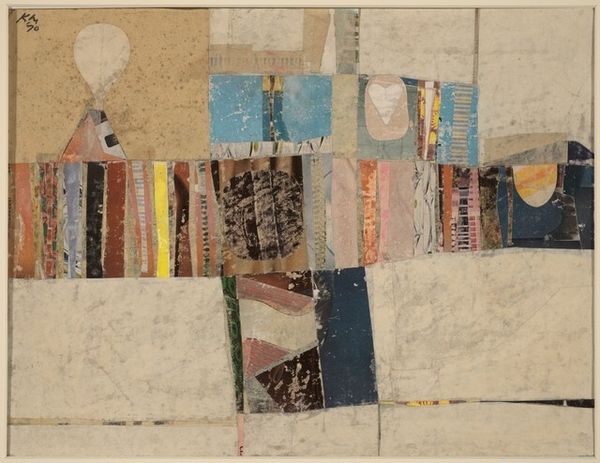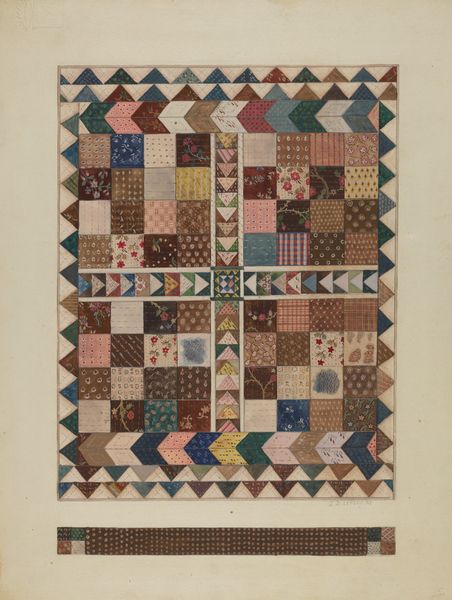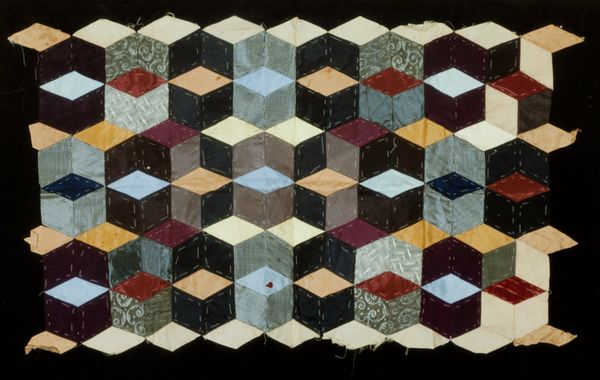
mixed-media, fibre-art, textile, mixed-media
#
mixed-media
#
fibre-art
#
folk-art
#
textile
#
folk-art
#
mixed-media
#
united-states
#
decorative-art
#
layered pattern
#
decorative art
Dimensions: 81 1/8 × 70 7/8 in. (206.06 × 180.02 cm)
Copyright: Public Domain
Editor: Here we have an anonymous “Crazy Quilt” made around 1882. It's a textile, a really dense composition of different fabrics and embellishments. I'm struck by the contrast between the apparent chaos and the overall geometric structure. How do you interpret this work? Curator: The term "crazy quilt" is rather misleading, isn’t it? These weren't just haphazardly thrown together. Consider the historical context. These quilts emerged during a time of immense social upheaval, of industrialization and changing gender roles. Made often from luxurious fabrics like velvet and silk, they reflect a changing economy that affected American households. Who traditionally created textiles, and who had access to luxury goods? Editor: Mostly women, I would imagine. But wealthier women, presumably? Curator: Exactly. Upper and middle-class women were expected to occupy the domestic sphere, and their needlework became a signifier of status and refinement. The quilt, in a way, becomes a canvas for self-expression but within tightly controlled boundaries. Do you see any subversive elements within the seeming traditional framework? Editor: Now that you mention it, there's an individualism in the patchwork. Each block is different, with personalized embroidery...almost like a quiet rebellion against uniformity. Curator: Precisely. These women used the materials available to them, refashioning, embellishing, and creating deeply personal objects within the acceptable realm of "feminine" crafts. Consider how this might parallel, or even challenge, the dominant art world’s focus on masculine genius. Editor: That makes me appreciate it even more. It's not just a quilt; it's a historical document stitched with layers of meaning. Curator: Yes! And a powerful testament to the creative agency of women who found ways to express themselves in a society that often silenced them.
Comments
minneapolisinstituteofart about 2 years ago
⋮
Among the vibrant patches in this crazy quilt are three printed souvenir ribbons: two relate to Freemasons (men-only secret societies that act as social groups), and the third commemorates the 1882 Wisconsin Pharmaceutical Association meeting. Souvenir ribbons in similar crazy quilts typically reference women’s charitable organizations or Civil War veterans’ reunions. The emphasis on exclusively male social and professional societies seen here is rare in the distinctly feminine, domestic craft of quilting. The donors of this quilt trace its ownership through their grandfather, Frank H. Allen. Originally from Wisconsin, Allen later lived in Staples, Minnesota, and was a doctor. Allen would have been a child when the quilt was made, and it is possible his father also worked in the medical field. Conservation of this artwork was made possible by Barbara and Paul Mikelson, in memory of Emma Kloos Hitzemann, through Mia's Art Champions program.
Join the conversation
Join millions of artists and users on Artera today and experience the ultimate creative platform.

